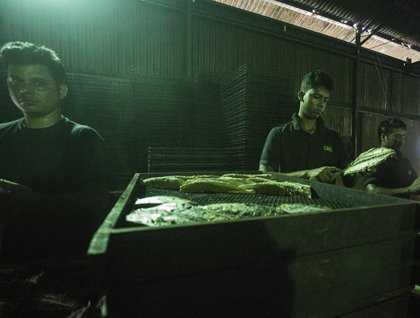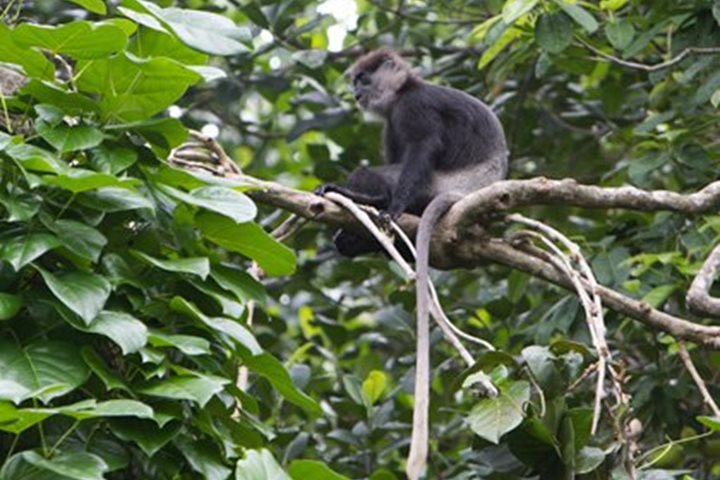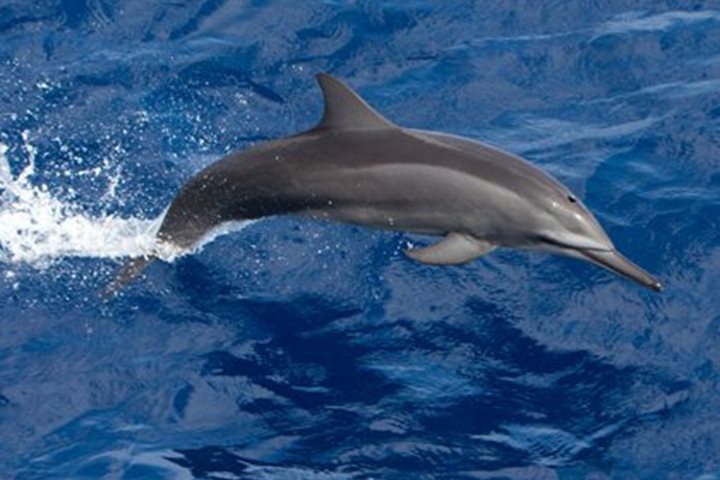On the eastern horizon this morning a long line of palms slowly emerged from the sea. We had arrived in the Maldives! This string of atolls, six hundred miles long, is the lowest country on Earth. Barely rising above the sea at all, its average elevation is less than five feet. From the water the colors are astounding, thousands of hues of blue in the sky and the sea, but the scenery is limited to the lines and clumps of coconut palms balanced on the razor’s edge of the horizon. These are the small islands and tiny motus, bits of land that emerge a few feet above the waves here and there around the rings of coral that are the true heart of this atoll nation.
The town of Gan, second largest in the country, was our official entry point for the Maldives. Before long we were cleared in and permitted to go ashore while our purser and other officers and crew dealt with further formalities of the usual nature. It was a hot day in Gan but quite pleasant in the shade, which we sought out during each stop on our tour of the island. Our route took us on a time capsule of the recent history of the Maldives, passing the new runway on the site of the WWII British airbase, barracks and officer’s quarters from the 1960s, modern shops and cafés in the center of town, and the gleaming convention center, only three years old yet abandoned and already beginning to gather dust and wear. Tom explained to us the political tug-of-war that led to this debacle: one recent administration seeking development and a subsequent one seeking to discredit the first.
We also stopped to see one of the Maldives important industries, a small factory where skipjack tuna was being smoked and dried for export to Japan. This is a special process that lasts for many days and uses wood imported from Japan for smoking to produce katsuobushi, an important flavoring ingredient in dashi broth and many other Japanese dishes. There was a bit of wildlife as well – we made a brief stop at a pleasant little resort and strolled through the grounds out to the beach. Beyond the beach chairs, in the crystal clear water of the shallows, there were many small black-tipped reef sharks, great subjects for photography in the sparkling sunlight.
It was this crystal clear water that we had come to see and we were all eager to get into it as soon as possible. While we enjoyed lunch in the delicious air-conditioning in the dining room, the National Geographic Orion moved a few miles across the lagoon to the north side of the atoll where a few tiny islands and channels through the reef offered the perfect place for swimming, snorkeling and diving. Here, beneath the surface, we found the Maldives we had come to see. There were acres of healthy coral to explore while floating leisurely on the surface or free-diving for a closer look. Powder-blue surgeonfish, perhaps the iconic species of the Indian Ocean, were everywhere, accompanied by parrotfish, damsels, sweetlips and a few big napoleon wrasse. While the divers dropped deeper along the outside wall, some of us chose to stay shallow, and dry, by joining Tom in the glass-bottom Zodiac. It didn’t matter a bit how we looked, or where we looked, as long as we looked down into the bright blue sea, into the heart of the Maldives.







